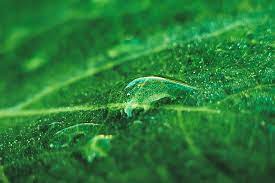- 7 October 2022
- No Comment
- 155
The Role of Trees in Drinking Water Security: It’s More than Just a Pretty Picture

Trees and water sound like the beginning of a fairy tale. But for many communities around the globe, this partnership is far from fictional. Trees have been proven to directly impact the quantity and quality of water available to us as humans. With an estimated third of the world’s population living in areas prone to water stress and scarcity, it’s more important than ever that we find new solutions to these pressing issues.
Today, communities across the country are facing growing concerns about their drinking water. From groundwater contamination to rising demand and droughts, communities are struggling with how to meet the needs of their residents best when it comes to access and quality of drinking water. The need for action is clear: Climate change will continue to exacerbate water scarcity in many regions; we are using more surface water while groundwater aquifers are continuing to be depleted at alarming rates, and peak water usage in summer months has led many cities to build expensive new reservoirs and other artificial solutions. Since trees play a key role in all three of these trends, they can also impact our drinking water security. Trees provide natural watershed services such as reducing runoff, filtering toxins from rainwater, storing groundwater for dryer seasons, and even removing harmful chemicals from the air we breathe. These benefits all have a direct effect on how much risk different communities face when it comes to clean drinking water.
Trees play an essential role in securing our drinking water future. According to the World Resources Institute (WRI), trees filter pollutants from the air, store and filter water, reduce flood risk and provide habitat for wildlife. This means that healthy forests are directly related to the health of our rivers, lakes, and streams all sources of drinking water. However, we can’t take trees for granted. Threats to the forest have been increasing over the past couple of decades as urbanization, and demand for wood products like pulp, paper, and timber for construction continues to grow. According to a study by The Nature Conservancy, 61 percent of U.S. forests are creeping toward senescence. In other words: they’re dying because old-growth forests no longer exist in most places where people live today.
-
Protecting Our Watersheds
Before we can look at how trees are saving water, we first need to understand a little bit about the source of water. Our water comes from several sources, most commonly from surface water such as rivers, lakes and aquifers, and groundwater. The health of these sources is vital for our health as well. The ecosystem that nurtures water sources provides several benefits such as flood management, providing a habitat for wildlife, and storing carbon dioxide. When we talk about the health of an ecosystem, what we’re talking about are the plants within it. Plants release oxygen, regulate water flow and provide nutrients for wildlife.
-
Groundwater Storage
When we think of groundwater in the context of drinking water, most people think about aquifers. But most of the groundwater found in the top few meters of the soil is held in soil pores. It is a critical source of drinking water, especially in arid regions. When we plant trees in riparian areas, they use this groundwater to survive hotter, drier conditions. But in the process, they allow the water to percolate back into the soil, where it naturally replenishes aquifers. When we plant more trees, we can increase the amount of groundwater in a region and, in turn, increase the amount of drinking water available for all of us to use.
-
Rainwater Filtering and Toxin Removal
Trees and forests help filter rainwater as it flows through soil and vegetation, removing toxins like heavy metals and pesticides before the water flows into nearby streams and rivers. Forested areas are especially important in this regard because they have the highest rate of filtration per unit area of any landscape type. When we plant more trees, we can help filter toxins and contaminants out of the water before it reaches groundwater and drinking water sources. Some studies have even found that trees can remove nitrates, a major concern in groundwater contamination, from the atmosphere. When we plant more trees, we can help filter out more toxins from rainwater before it reaches groundwater and drinking water sources.
-
Drought Resilience
When we plant trees, we can help reduce the intensity and frequency of droughts and, in turn, improve drought resilience in the whole region. Droughts are often linked to water shortages, where there simply isn’t enough water for all the various uses humans desire. When we plant more trees, we increase the amount of water in the region by helping the land store more water in the soil. This can help a region become more resilient to drought as the land has more water available to meet all the competing needs, including drinking water.
-
Pollution Reduction
The level of pollution in our air and water is rising, but what does this have to do with trees? In addition to regulating the amount of water in our ecosystem, trees also help filter pollution from the water. When water flows through the soil, it picks up any pollutants that are present. This includes solid particles such as mercury, lead, sulfur, and carbon, as well as gases such as ozone and methane. Trees greatly impact how much pollution is absorbed by water and can even help reduce the flow of some pollutants. When a tree’s leaves wilt, they shed water back into the atmosphere and divert it away from the soil. This means less water is exposed to pollutants, making it safer for humans to drink. Trees also help to absorb particles such as carbon dioxide, ozone, and methane, making our air safer to breathe, and reducing the impact of climate change.
Conclusion
Trees are one of the most valuable resources we have. Beyond the aesthetic beauty of their leaves and branches, they provide food, shelter, and water to us all. And when you consider that they don’t require much to thrive, it makes sense that we need to look after our forests and plants. With an increasing water demand and a decrease in the availability of this essential resource, it’s more important than ever that we find new solutions to these pressing issues. When you consider the impact that trees can have on water security, it makes sense to plant as many trees as possible. Protecting our watersheds and forests is vital for the survival of our species, so let’s make sure we take action now. When we plant more trees, they provide us with many direct and indirect benefits related to drinking water. Trees help reduce runoff and filter rainwater, storing more water in the soil to better prepare for future droughts. Trees also help remove toxins and improve the overall health of watersheds, making them more resilient to extreme weather events. When we plant more trees, we can help address many of the challenges associated with drinking water, including drought and groundwater depletion.
To know more about the scarcity of water, especially in Karachi, please see the video below:



